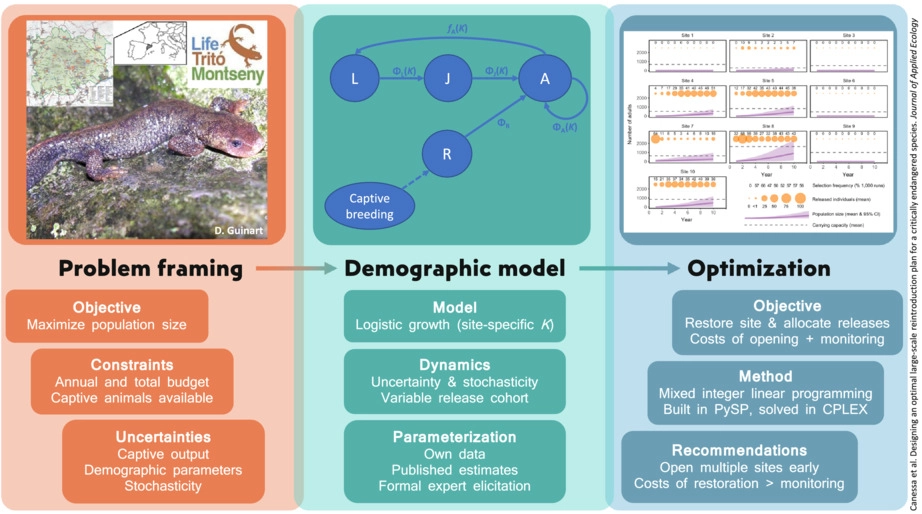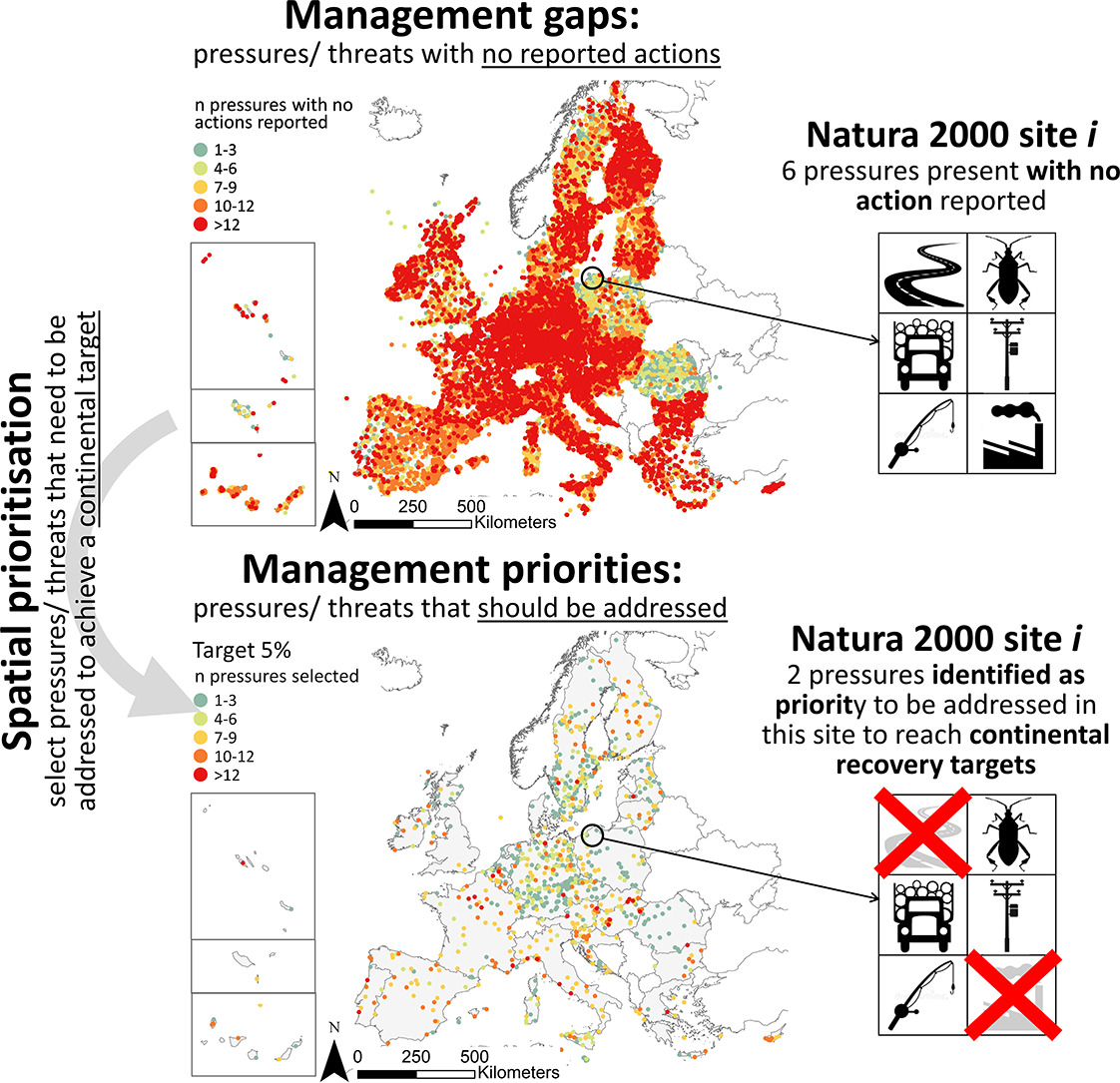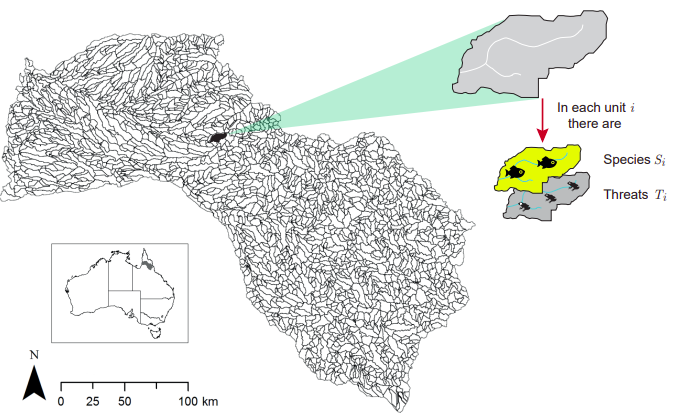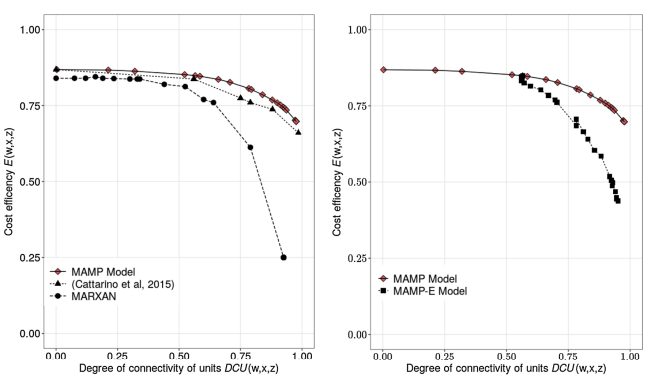publications
* denotes equal contribution
An up-to-date list is available on Google Scholar.
2023
2022
-
 ×Designing an optimal large-scale reintroduction plan for a critically endangered speciesStefano Canessa, José Salgado-Rojas, Dani Villero, Lluís Brotons, and 6 more authorsJournal of Applied Ecology, 2022
×Designing an optimal large-scale reintroduction plan for a critically endangered speciesStefano Canessa, José Salgado-Rojas, Dani Villero, Lluís Brotons, and 6 more authorsJournal of Applied Ecology, 2022Optimization methods are routinely used for landscape-level conservation planning, but still underused in supporting species recovery programs. A possible barrier is the difficulty in representing and optimizing complex multidimensional problems: for example, many species recovery programs require management at the population level, but also allocation of effort and resources across populations and over time. Optimization methods can help, but they must strike a balance: too much realism can be computationally unfeasible, but too much simplification can limit relevance for complex programs, exactly where decision support might be most needed. We show how integer linear programming can be used to solve such a complex problem, combining multiple site-level demographic models with realistic management constraints under different sources of stochasticity and uncertainty. We apply this protocol to reintroduction planning for the critically endangered Montseny brook newt Calotriton arnoldi, optimizing site restoration efforts, captive releases from limited and variable stocks, and short- and long-term monitoring, all across 17 sites over 10 years. For C. arnoldi, the optimal solution was generally to open as many sites as possible, as soon as allowed by budget, and to reinforce sites with additional releases. The number of new populations that could be established was limited not only by the high initial costs of restoring and preparing sites for releases, but also because opening new sites would require subsequent monitoring, eventually adding up to unsustainable costs. Synthesis and applications. Our results suggest releases of Calotriton arnoldi should be dictated first by habitat restoration capacity, then by long-term sustainability. More generally, our study shows how quantitative decision-support methods can improve the value of science for conservation, and help managers find solutions to complex problems. However, deploying those methods requires close collaboration between managers and scientists, to ensure models are realistic, results are relevant, and the whole process is informative. The prioritisation approach that we demonstrate here could be valuable to plan investment to close the current management gap and inform conservation across the EU.
-
 ×prioriactions: Multi-Action Conservation PlanningJosé Salgado-Rojas, Irlanda Ceballos-Fuentealba, Virgilio Hermoso, Eduardo Álvarez-Miranda, and 1 more author2022
×prioriactions: Multi-Action Conservation PlanningJosé Salgado-Rojas, Irlanda Ceballos-Fuentealba, Virgilio Hermoso, Eduardo Álvarez-Miranda, and 1 more author2022 -
 ×Spatial prioritisation of management for biodiversity conservation across the EUVirgilio Hermoso, José Salgado-Rojas, Mónica Lanzas, and Eduardo Álvarez-MirandaBiological Conservation, 2022
×Spatial prioritisation of management for biodiversity conservation across the EUVirgilio Hermoso, José Salgado-Rojas, Mónica Lanzas, and Eduardo Álvarez-MirandaBiological Conservation, 2022The last report on the State of the Nature in the European Union (EU), a periodic monitoring exercise at continental scale, shows that biodiversity continues to decline, despite the efforts done in the last decades. Urgent action is, therefore, needed to reverse this trend. Effective conservation must rely on careful planning and strategic investment of limited resources to maximise efficiency of conservation efforts. Here, we carry out a gap analysis to identify pressures and threats with no reported management action over the period 2013–2018 and identify priorities to close this gap. We use information from the State of Nature report to identify combinations of species/habitats × pressures/threats affecting them with no management action reported. We finally prioritise the selection of pressures and threats to be addressed for all species and habitats collectively. We found that 2/3 of all combinations of species/habitat × pressure/threat did not have management actions reported. Management gaps were especially large for birds, amphibians and reptiles and marine bioregions in northern EU. This management gap affects 98 % of Natura 2000 sites, with at least one species/habitat with no management action reported for one or more pressures/threats. The spatial prioritisation analyses showed that all species and habitats could benefit collectively from a reduction in 30 % of pressures/threats incidence by targeting a small proportion of pressures/threats and Natura 2000 sites. The prioritisation approach that we demonstrate here could be valuable to plan investment to close the current management gap and inform conservation across the EU.
2020
-
 ×An integer programming method for the design of multi-criteria multi-action conservation plansEduardo Álvarez-Miranda, José Salgado-Rojas, Virgilio Hermoso, Jordi Garcia-Gonzalo, and 1 more authorOmega, 2020
×An integer programming method for the design of multi-criteria multi-action conservation plansEduardo Álvarez-Miranda, José Salgado-Rojas, Virgilio Hermoso, Jordi Garcia-Gonzalo, and 1 more authorOmega, 2020The design of conservation management plans is a crucial task for ensuring the preservation of ecosystems. A conservation plan is typically embodied by two types of decisions: in which areas of a given territory it will be implemented, and how actions against threats will be deployed across these areas. These decisions are usually guided by the resulting ecological benefit, their spatial effectiveness, and their implementation cost. In this paper, we propose a multi-criteria optimization framework, for modeling and solving a mixed integer programming characterization of a multi-action and multi-species conservation management design problem. The optimization tool seeks for a management plan that maximizes ecological benefit and minimizes spatial fragmentation, simultaneously, while ensuring an implementation cost no greater than a given budget. For showing the effectiveness of the methodology, we consider a case study corresponding to a portion of the Mitchell river catchment, located in northern Australia, where 31 freshwater fish species are affected by four threats. The attained results show how the methodology exploits the trade-offs among the ecological, spatial and cost criteria, enabling decision-makers to explore and analyze a broad range of conservation plans. Selecting conservation plans in a more informed way allows to obtain the best outcomes from a strategic and operational point of view.
-
 ×A mixed integer programming approach for multi-action planning for threat managementJosé Salgado-Rojas, Eduardo Álvarez-Miranda, Virgilio Hermoso, Jordi Garcia-Gonzalo, and 1 more authorEcological modelling, 2020
×A mixed integer programming approach for multi-action planning for threat managementJosé Salgado-Rojas, Eduardo Álvarez-Miranda, Virgilio Hermoso, Jordi Garcia-Gonzalo, and 1 more authorEcological modelling, 2020Planning for management actions that address threats to biodiversity is important for securing its long term persistence. However, systematic conservation planning (SCP) has traditionally overlooked this aspect and just focused on identifying priority areas without any recommendation on actions needed. This paper develops a mixed integer mathematical programming (MIP) approach for the multi-action management planning problem (MAMP), where the goal is to find an optimal combination of management actions that abate threats, in an efficient way while accounting for connectivity. An extended version of the MAMP model (MAMP-E) is also proposed that adds an expression for minimizing fragmentation between different actions. To evaluate the efficiency of the two models, they were applied to a case study corresponding to a large area of the Mitchell River in Northern Australia, where 45 species of freshwater fish are exposed to the presence of four threats. The evaluation compares our exact MIP approach with the conservation planning software Marxan and the heuristic approach developed in Cattarino et al. (2015). The results obtained show that our MIP models have three advantages over their heuristic counterparts: shorter execution times, higher solutions quality, and a solution quality guarantee. Hence, the proposed MIP methodology provides a more effective framework for addressing the multi-action conservation problem.